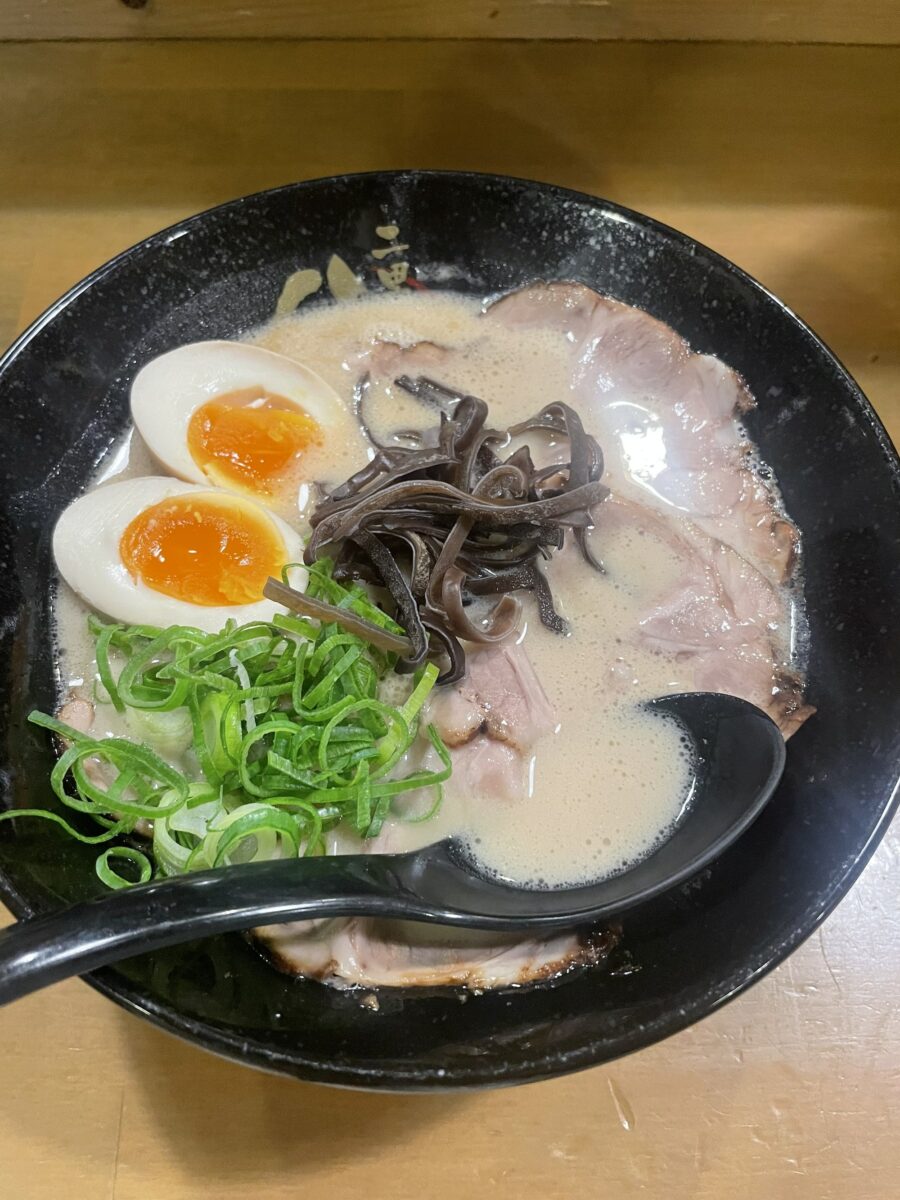
Welcome to the delectable world of Fukuoka cuisine, where each mouthful tells a story doused in tradition and bursting with flavor.
Some links on this page are affiliate links. We may earn a commission if you make a purchase, at no additional cost to you.
The 5th biggest city in Japan and the beating heart of the Kyushu Region, Fukuoka Prefecture is a culinary paradise renowned for its rich food culture. From the bustling streets of Hakata to the serene Itoshima countryside, Fukuoka boasts a diverse array of dishes that tantalize the taste buds and warm the soul.
Join me as we take a walk through 7 iconic dishes— from appetizers to entrée to dessert. I’ve included something for both your everyday foodie AND more adventurous food lovers—so get out your camera and come with an empty stomach!
Appetizers
1. Mentaiko: Spicy Cod Roe
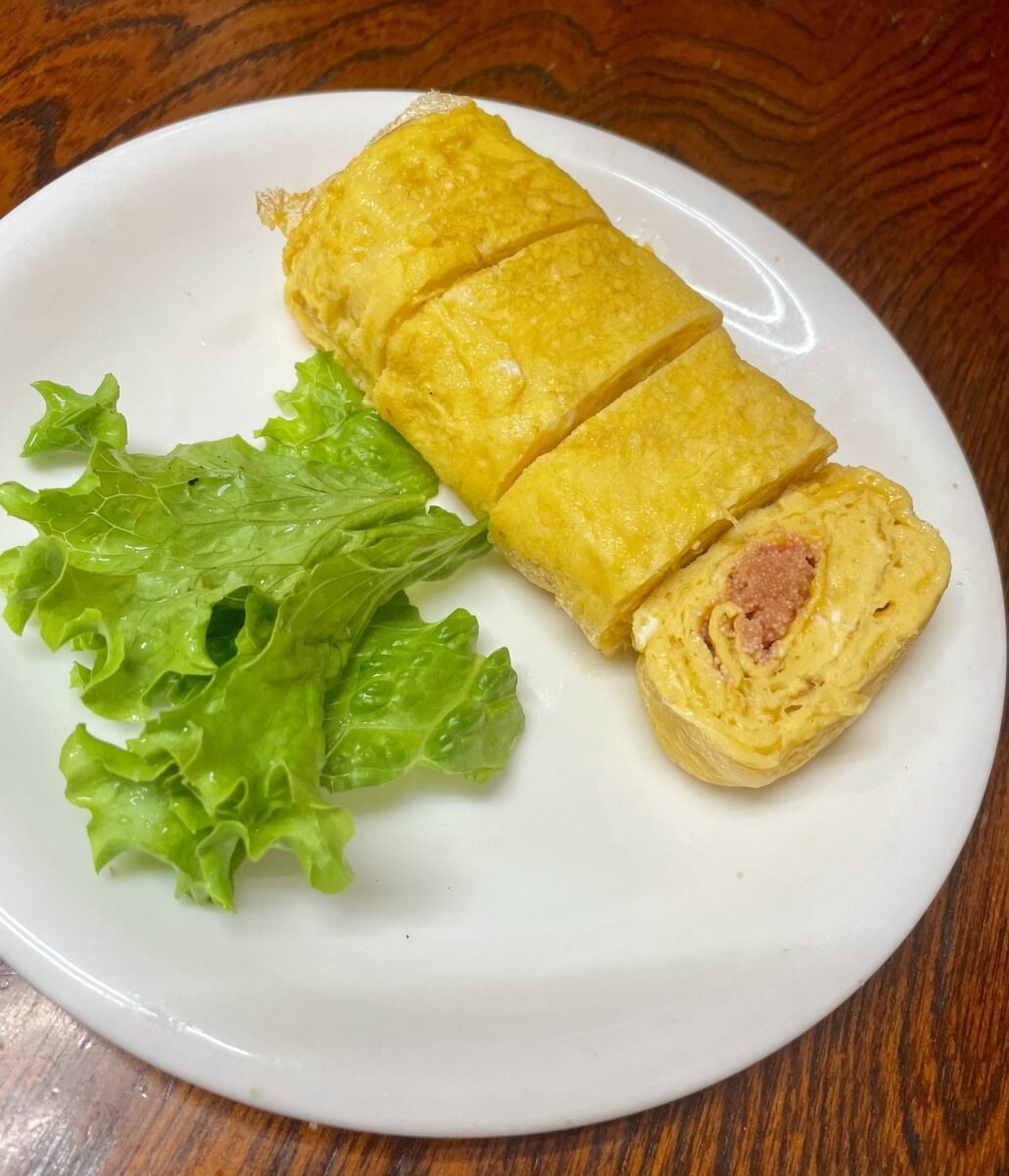
Starting off strong for our adventurous eaters, we have the beloved mentaiko—a spicy cod roe that packs a punch of salty umami goodness. It can be enjoyed as a standalone appetizer, over a bowl of steaming rice, incorporated in onigiris (rice balls), sushi, or even wrapped in Japanese egg rolls.
Trip Planning Tips
Airfare deals – find your best deal.
Lodging deals – from capsules to luxury stays.
Guided Tours – customized or pre-made.
Travel Insurance – just in case.
SIMs/eSIMS – data or voice, text, & data. 25% off long-term voice, text, and data
A vibrant pink, each briny bite is like the burst of a mini ocean. Raw mentaiko does not last long without refrigeration, and it is therefore hard to bring on the plane; if you are traveling within the country, you can buy frozen, which should give you 6 or 10 hours before refrigerating it.
A famous souvenir is menbei, or mentaiko-senbei—roasted rice crackers with cod roe. This pretty much can only be found in Fukuoka as a local snack.
Famous Mentaiko Stores: Fukuya
2. Goma Saba: Sesame Mackerel Sashimi
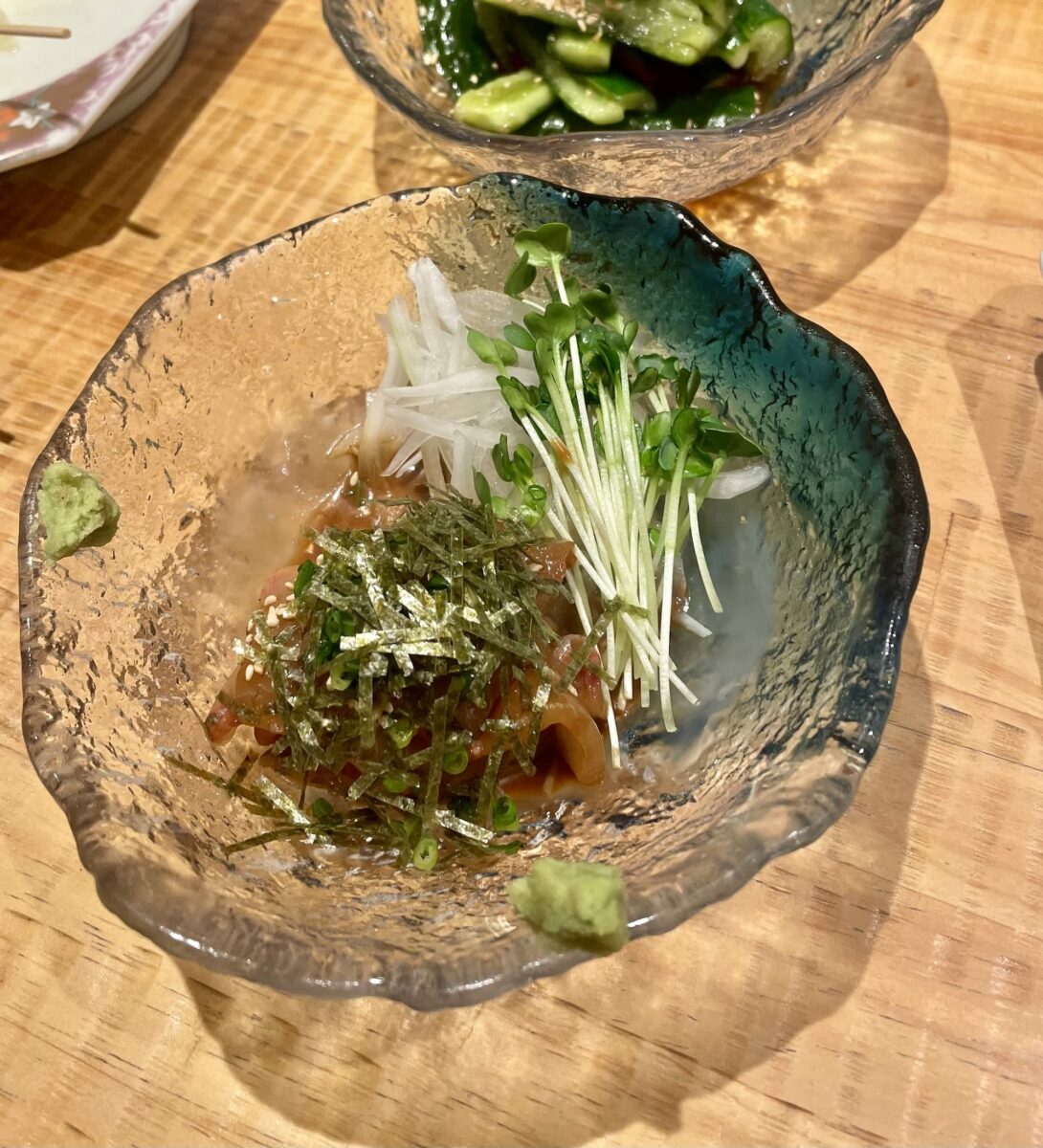
Next up, we have mackerel sashimi marinated in soy sauce and sesame oil, a well-known local Fukuoka delicacy that other Japanese travelers come to eat when they visit Fukuoka.
Raw mackerel is quite difficult to find in Japan— despite the abundance of other types of sashimi. Being a blueback, the quality of mackerel generally degrades too quickly out of water to consume raw. In the rest of Japan, mackerel is eaten grilled, stewed, or pickled (shime saba).
Fukuoka is close enough to the ocean for that not to be a problem, and the marinade also helps keep the freshness!
You can find goma saba at most izakayas (Japanese-style bars) and places that serve seafood.
3. Yakitori: Grilled Chicken Skewers
Finally—a non-fish dish for our everyday foodies.
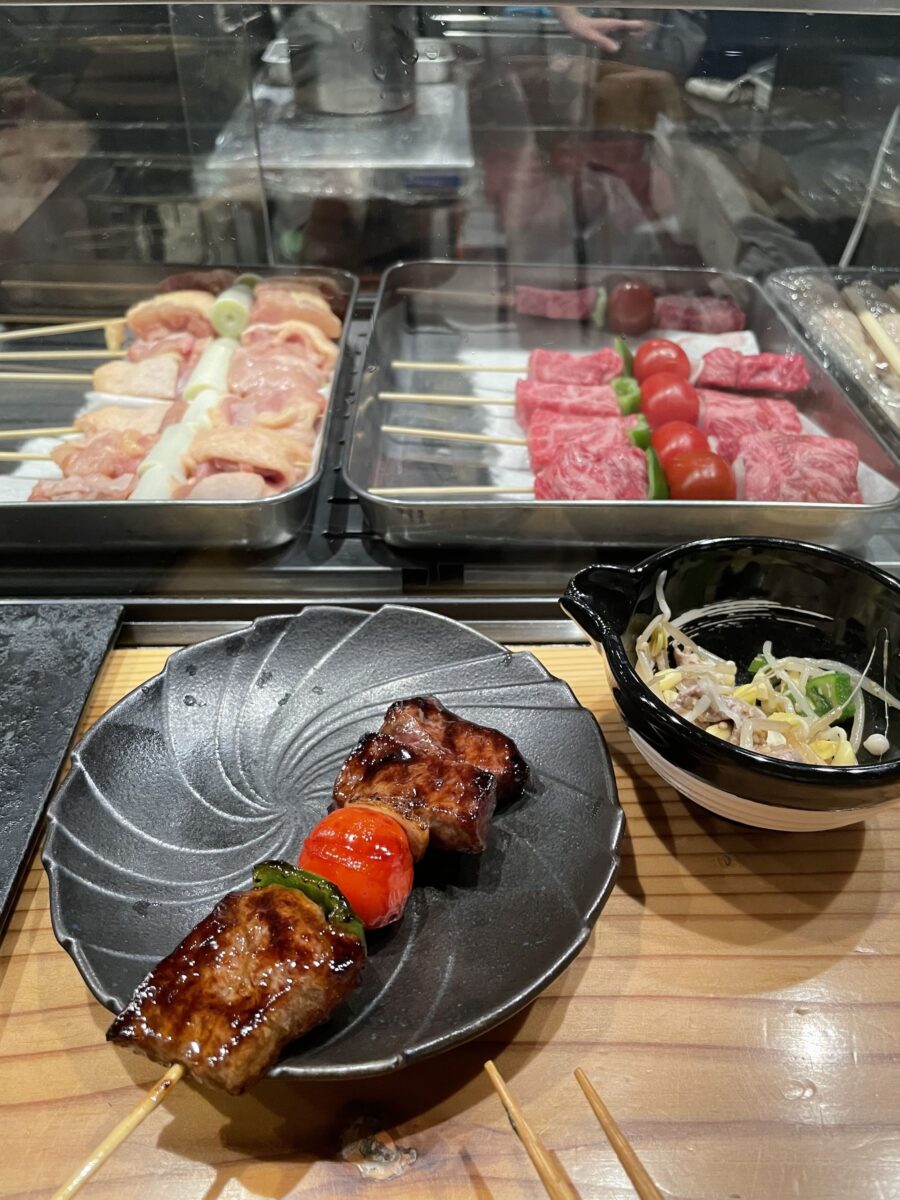
Perhaps you’re a red-blooded Westerner, and you prefer meat to seafood. Yakitori, or meat skewers, are made with juicy pieces of chicken (or sometimes pork or beef), skewered and cooked over a grill. The best places are grilled over charcoal for a deeper flavor.
Again, you can find yakitori all over Japan, but Fukuoka’s mouthwatering yakitori is on the next level— creative and grilled to perfection. Avoid chain stores and go for a local store!
Yakitori is a quintessential Japanese street food that pairs perfectly with a cold beer or hot sake, but having it at a sit down restaurant can also be an amazing gastronomical experience.
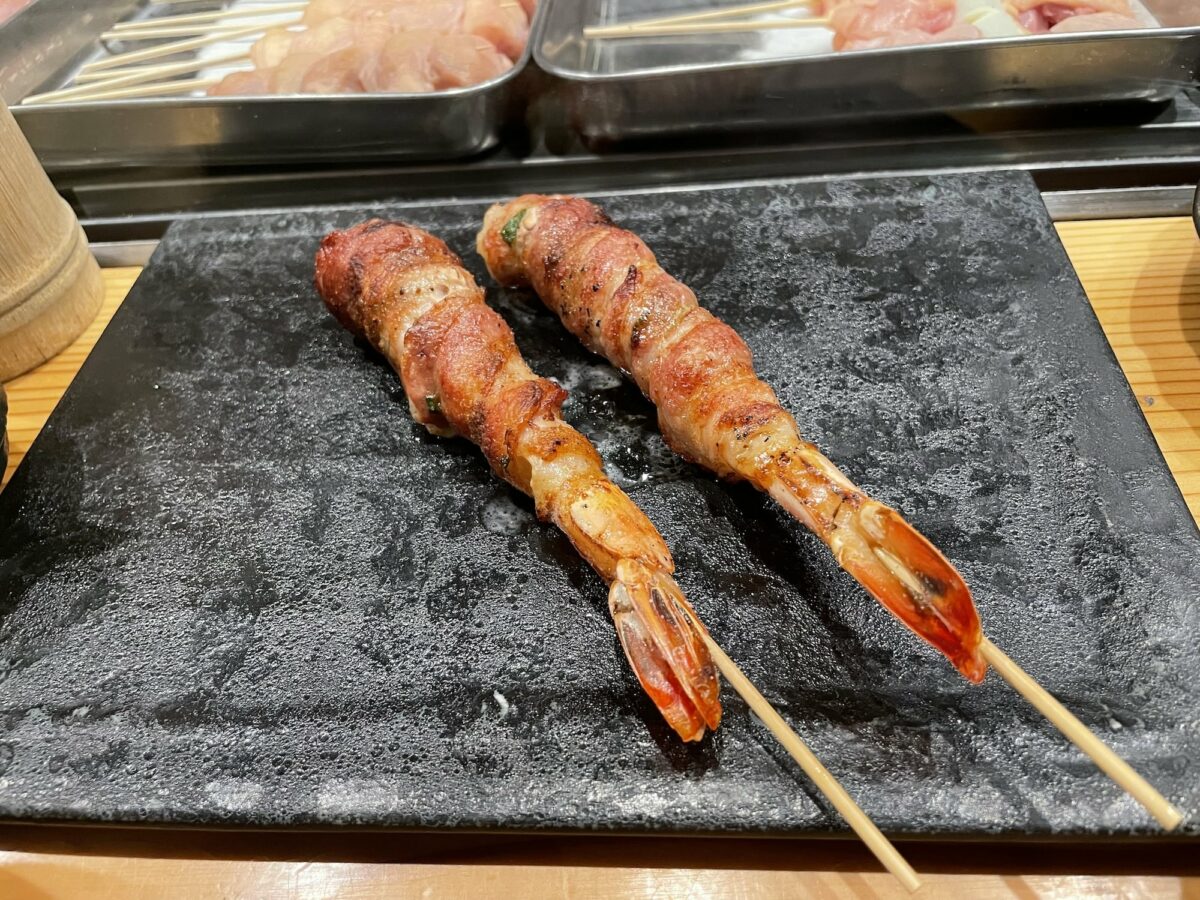
Pictured here is shrimp wrapped in bacon– possibly the best, most tender yakitori I’ve ever had. It’s common to find internal organs such as chicken liver, heart, or gizmo on the menu as well.
If you want to adventure close to home and try something similar to the taste and texture of meat, I recommend gizmo (called “suna zuri” or just “zuri” in Fukuoka)—heart and liver both have an organ-like texture and flavor, and can be an acquired taste.
For our picky eaters, stick with torimomo or negima, which are made from chicken thighs and breast. Bacon-wrapped cheese or mini tomatoes are also some of my personal favorites!
Restaurant Recommendation: Yakitori 526, read as “kojiro” or Yakitori 634 (“musashi”). Both are small, locally owned restaurants that seat only 3-4 parties, owned by the same person in the Tenjin area.
When I went to 526, the chef grilled each skewer to order fresh in front of our eyes and was superbly skilled and very friendly.
Main Dishes
4. Tonkotsu Ramen
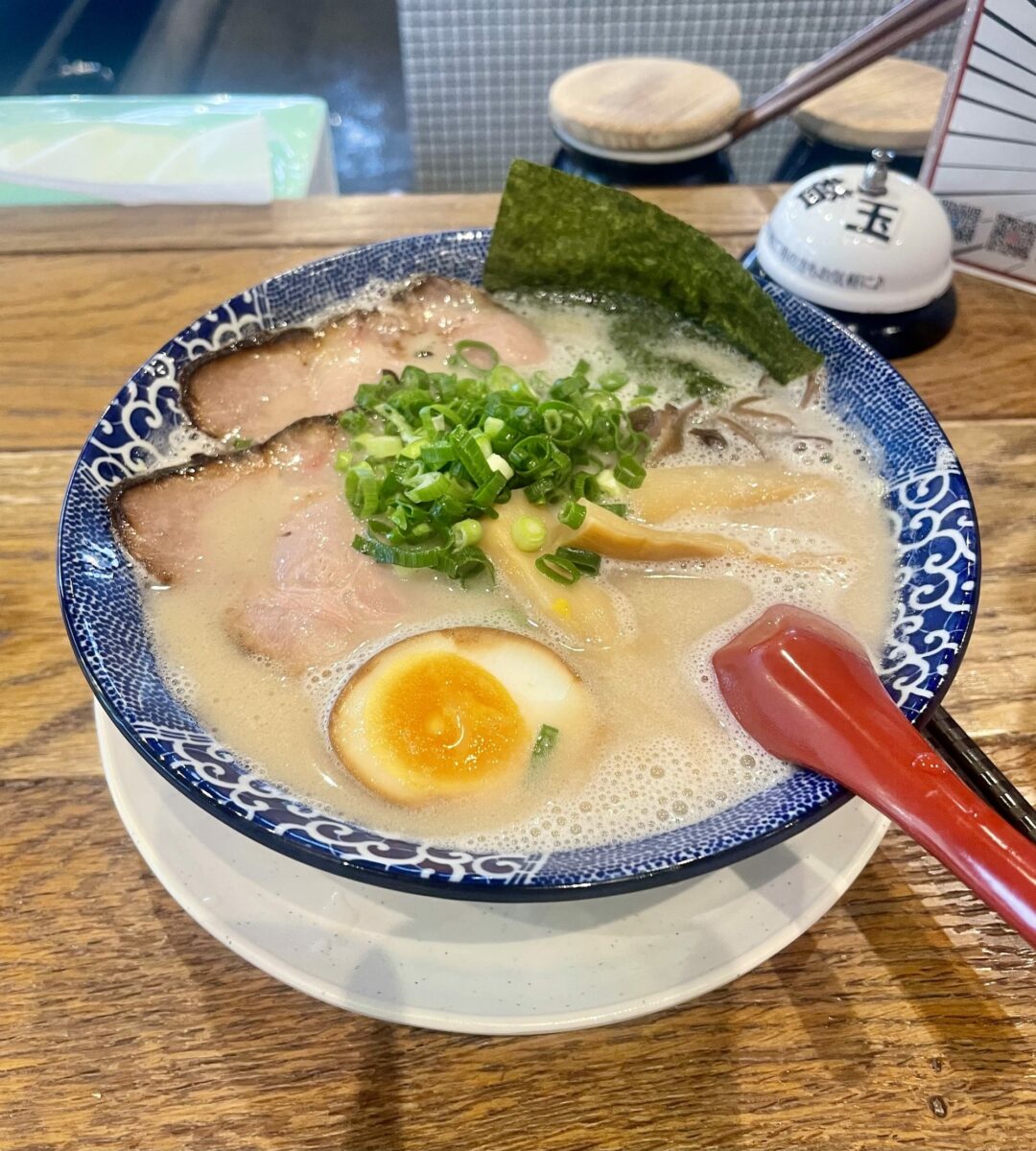
No culinary tour of Fukuoka would be complete without indulging in a steaming bowl of tonkotsu ramen. When you mention Hakata to any Japanese person, the first thing they think of is probably tonkotsu ramen.
Literally meaning “pork broth,” tonkotsu originated from the Hakata area and is now a popular Japanese food all over the world.
This iconic noodle soup features a creamy pork bone broth simmered to perfection. It’s accompanied by tender slices of chashu (grilled pork), springy noodles, and a medley of toppings like green onions and nori. Most places in Hakata will ask how hard you want your noodles and how salty you want the broth.
Casual foodies beware: authentic tonkotsu ramen is brewed for hours or even days and has a very distinct and strong smell— anytime you pass by a ramen shop in Fukuoka, you’ll know it before you even see the sign.
That’s how the extremely rich broth and umami flavor is achieved!
With each slurp, you’ll experience a harmonious blend of savory, salty, and umami flavors that will leave you craving more.
Famous Ramen Shops: Daruma, Shinshin, Isso, Ichiran.
Ichiran, which has expanded all over Japan (and overseas in the US and Asia), also originated from Fukuoka. But if you’re here—try some of the more local stores I’ve listed above.
5. Motsunabe: Offal Hotpot
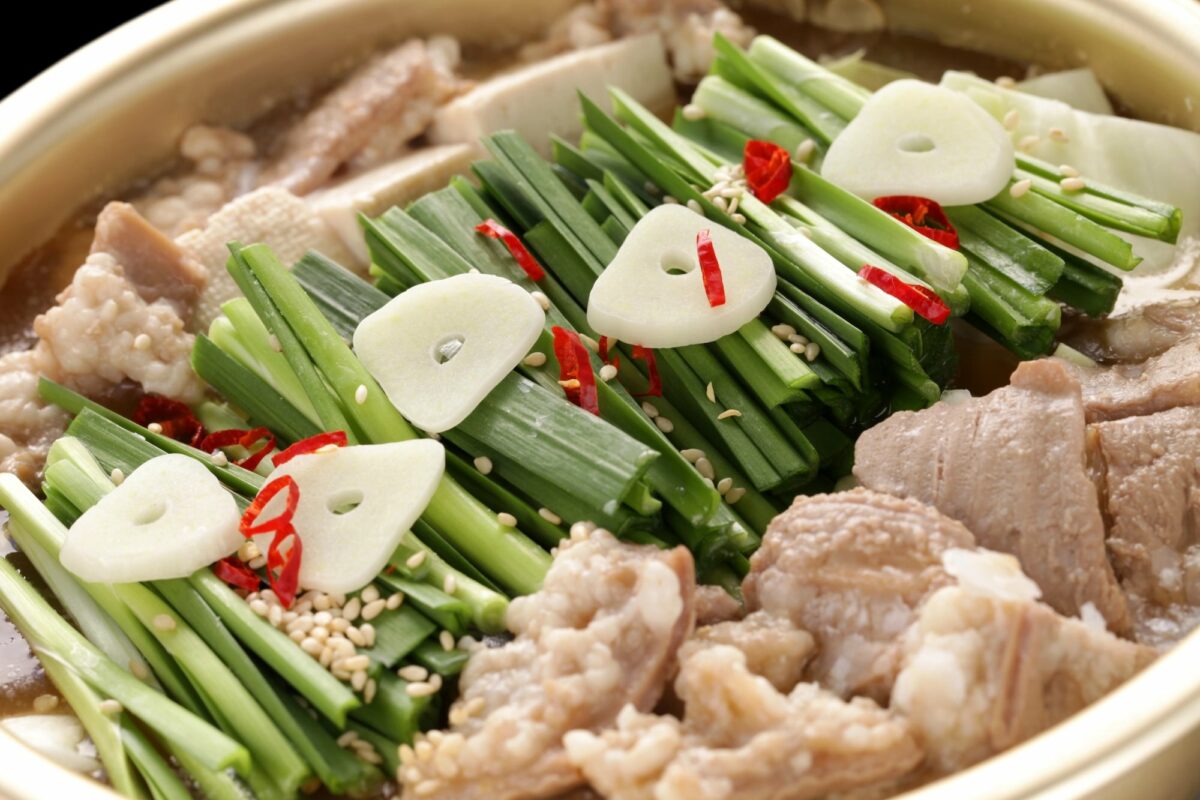
For a hearty and comforting meal, look no further than motsunabe!
Motsunabe is a stewed hotpot often eaten in winter consisting of “motsu“, or offal (basically cow or pork intestines), tofu, garlic chives along with other veggies like cabbage and bean sprouts.
This communal dish can be a bit of a challenge for westerners, since we don’t have a culture of consuming internal organs. However, those who want to try this local favorite are in for a surprise! The soft white motsu is tender and chewy and melts in the mouth, and there’s no off-putting smells like some other intestine dishes.
You can find this hotpot in most major cities in Japan, but it originated from the Kyushu region and is known for warming up the body well.
The local way to eat is to eat most of the offal and veggies first, then order a “shime”, or the “conclusion”—this is usually rice or thick champon noodles.
So as not to waste the broth, the rice or noodles are added to the remaining liquid in the hotpot to make a flavorful porridge that delights the taste buds. Definitely try this with a group of friends or family to share!
Famous restaurants: Motsunabe Oyama
Honorable Mention: Mizutaki
For a hotpot option that’s lighter on the palate, you can enjoy the delicate flavors of mizutaki— a hot pot dish featuring thinly sliced chicken, vegetables, and tofu cooked in a clear, savory broth. The broth consists of quality chicken stock that is generally stewed for hours.
Known for its simplicity and emphasis on fresh, high-quality ingredients, mizutaki is a favorite among those seeking a nourishing and healthy meal— even other local Japanese visitors!
Mizutaki is rarely found in the rest of Japan, let alone overseas—so definitely stop by if you’re a real gourmand!
Desserts
6. Amaou Strawberries
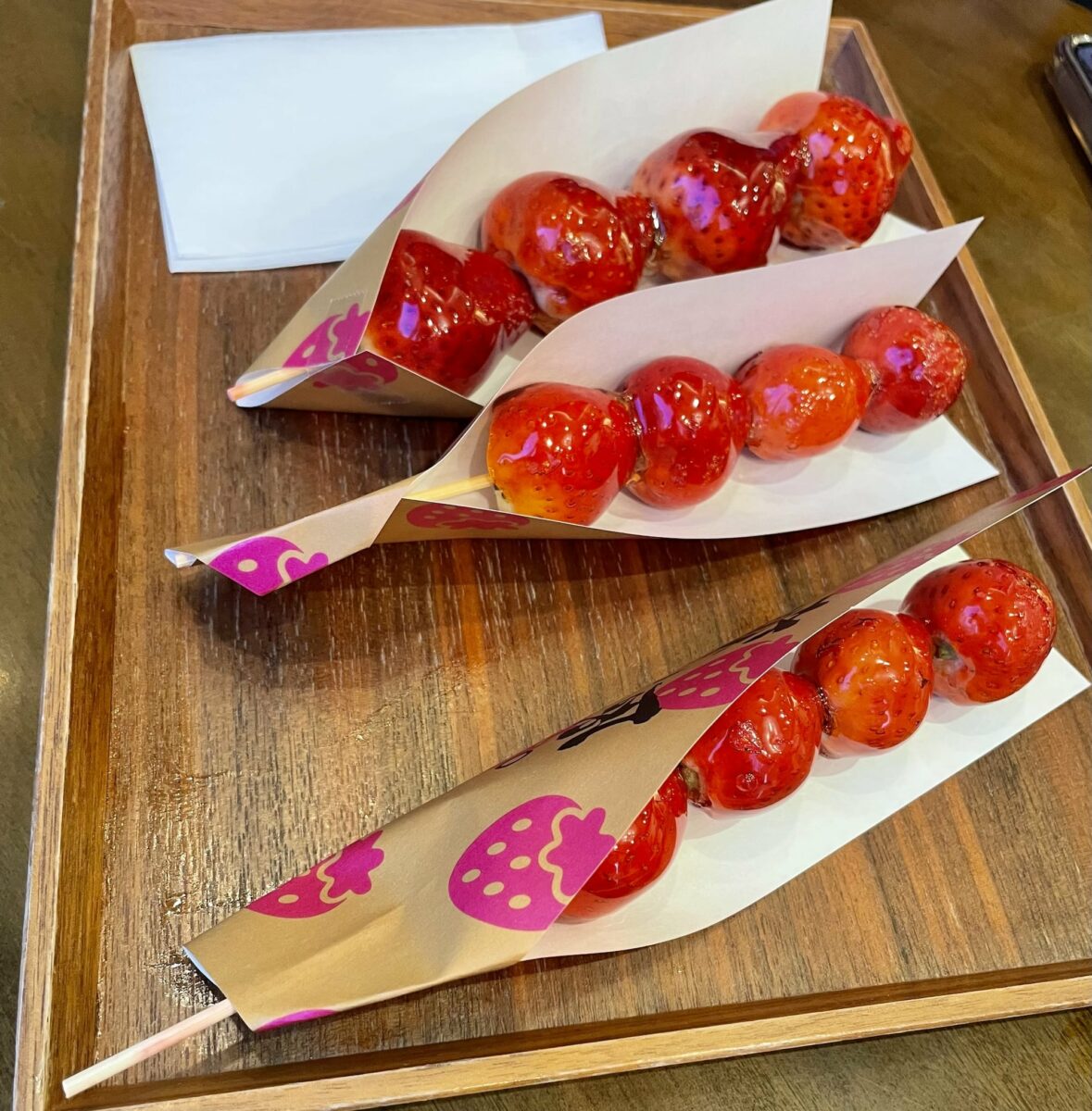
Now that we’ve tried appetizers and main dishes from both sea and land, let’s move on to my personal favorite—dessert!
For dessert, try the local brand of strawberries. Amaou is a Fukuoka strain of strawberries renowned for their exquisite sweetest, large size, and juiciness. Amaou generally has very little acidity.
Sweets: Amaou parfaits or pancakes can be found in many local cafes or specialist stores near tourist destinations.
For candied strawberries: you can find these anywhere near a tourist destination, at some cafes, or a specialist store. One candied strawberry shop with a few branches in the city center of Tenjin is called Itoking.
Fresh: If you want to try amaou fresh, go to any local supermarket— especially in the winter when they are in season!
7. Baked Goods
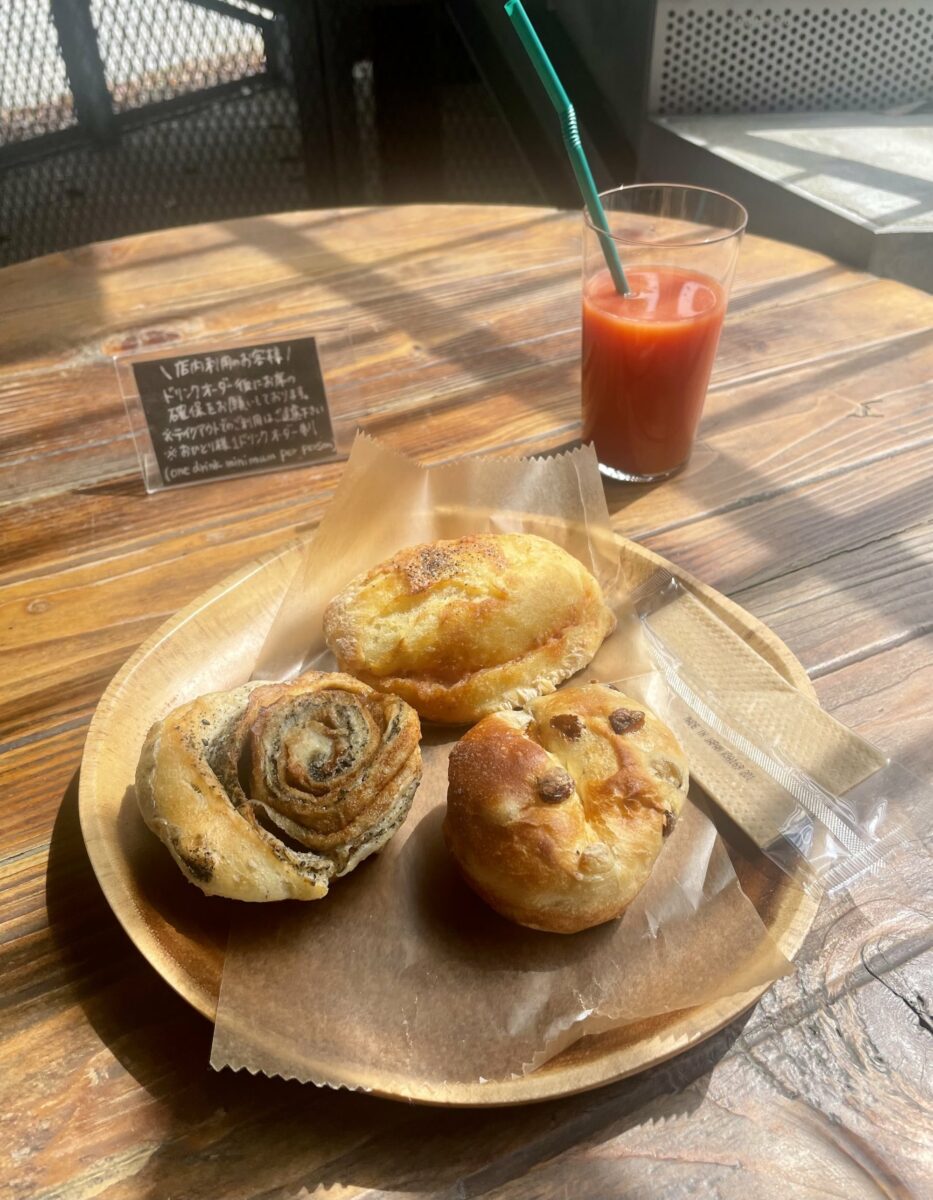
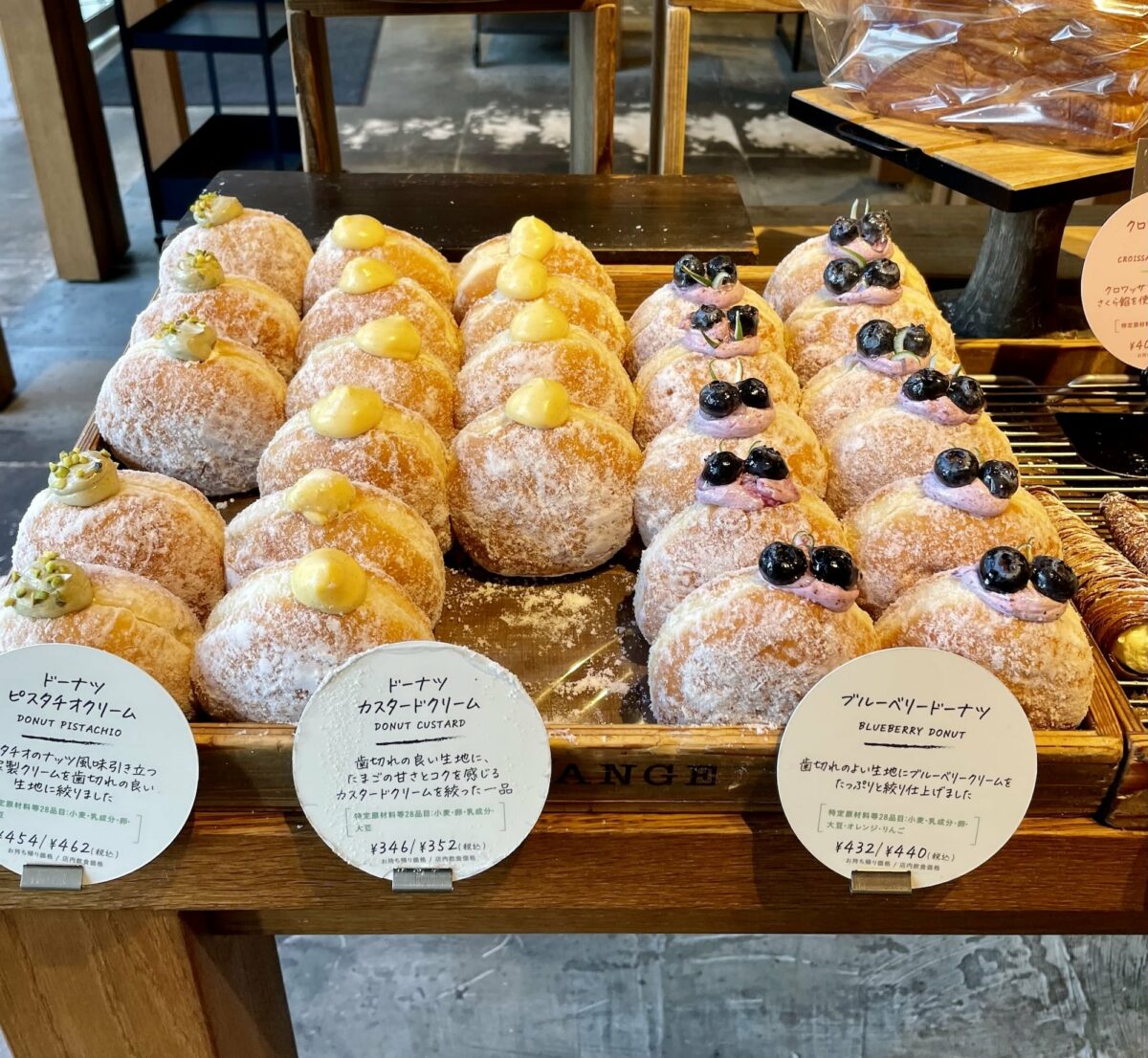
Fukuoka is also known for having delicious baked goods—I’ve traveled all around Japan, and some of the best bread I’ve ever had is from Fukuoka city. I particularly love a bakery in Tenjin called “Pain Stock,” which has a variety of French-style baked goods with a Japanese twist.
Pictured here: sesame roll, mentaiko baguette, and a kinako (soybean) and raisin sweet bread, and blueberry crème filled donuts from a different bakery.
Conclusion:
With its diverse array of exotic and homey dishes, Fukuoka offers a culinary experience like no other, where every bite is a celebration of local ingredients and incredible culinary prowess.
This region is a treasure trove of culinary delights waiting to be discovered; from the adventure of fish eggs and intestine hotpot to the comforting familiarity of tonkotsu ramen and grilled skewers— each dish offers a glimpse into the rich tapestry of Fukuoka’s culinary heritage.
Renowned even amongst the rest of Japan for having delicious food, those from other prefectures often say that there are very little “short straw” or losing restaurants when compared to other big cities like Tokyo or Osaka.
So, the next time you find yourself in this enchanting corner of Kyushu, be sure to go out and adventure a little! The variety of local Fukuoka flavors and ingredients will captivate the senses and leave a lasting impression.
You can find most of these foods in the city center around Tenjin or Hakata Station–and be sure to take a stroll along Nakasu River and check out the beautiful view and food stalls.
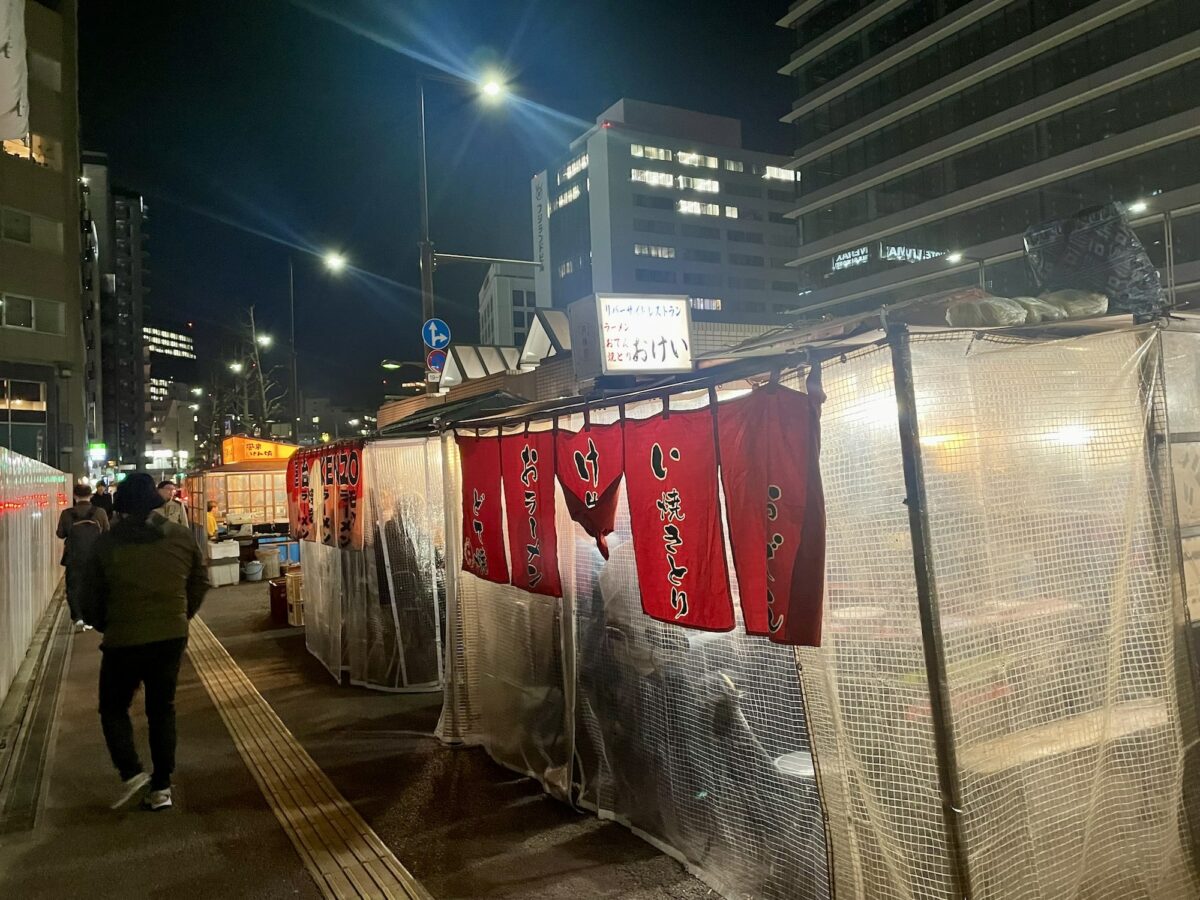
Culture Note
As a postscript: Fukuoka is unique in that it has the greatest number of “Yatai”, or open air food stalls, in all of Japan.
You can find yatai along the Nakasu River, central Tenjin, and Watanabe Dori. These phantom open air stalls usually set up shop daily from around 6PM, and leave as if nothing was ever there around midnight.
Even in the dead of winter, you can find these stalls with some warmth-keeping plastic screens set up. Try the yakiramen (stir-fried ramen) because you won’t find this anywhere else in Japan!

Leave a Reply